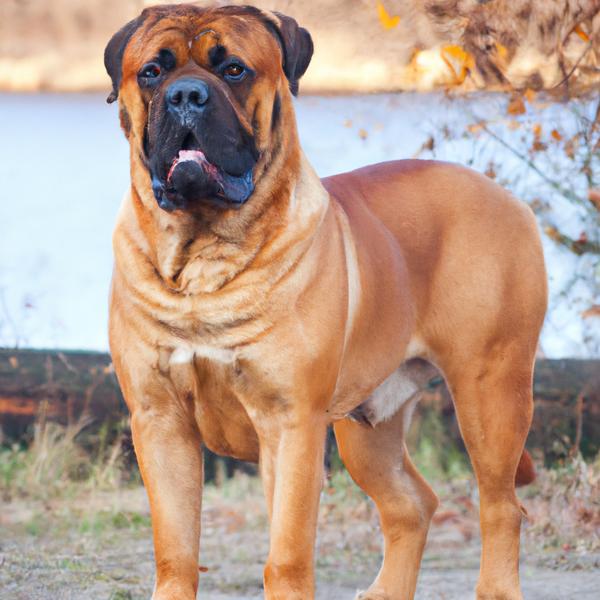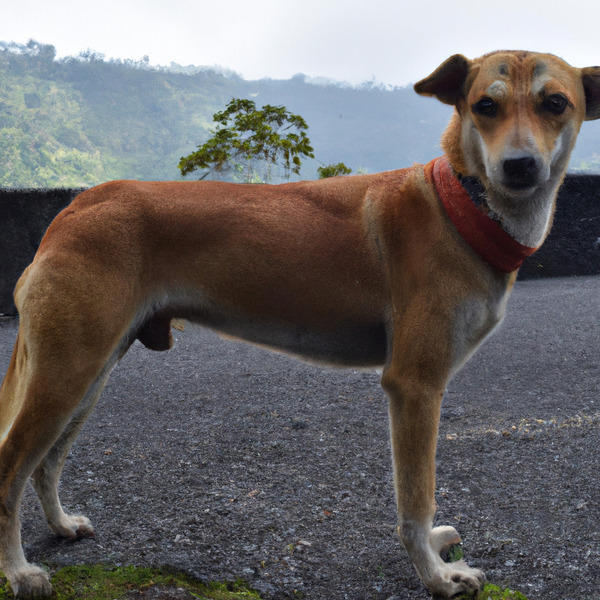Bullmastiff vs. Kintamani: Breed Differences and Similarities
Weight Gain Potential
Which breed eats more: Bullmastiff or Kintamani?
Bullmastiff tends to gain weight easily, needs increased exercise and playtime along with controlled food intake.
Kintamani has low obesity risk, but needs exercise and food monitoring for optimal health.
Hypoallergenic
Are Bullmastiffs or Kintamanis hypoallergenic, or neither?
Unfortunately, neither Bullmastiff nor Kintamani are hypoallergenic, which may not make them the best choice for dog lovers who suffer from pet allergies.
Temperament
What are the personalities of Bullmastiff and Kintamani dogs?
Alert
Courageous
Docile
Loyal
Reliable
Calm
Devoted
Powerful
Protective
Intelligent
Gentle
Loyal
Alert
Shedding Level
Do Bullmastiffs shed more than Kintamanis, or which breed sheds more, Bullmastiffs or Kintamanis?
Bullmastiff or Kintamani dogs are not heavy shedders, but they will lose a significant amount of hair each year. To decrease the amount of shedding, you can regularly brush your Bullmastiff or Kintamani. This will remove loose hair and keep their coat growing in the same direction.
Watchdog Ability
Which dog breed makes a better watchdog, the Bullmastiff or Kintamani?
The Bullmastiff and Kintamani dogs are some of the best choices if you want good watchdogs. These breeds will keep watch over you and your family at all times. They take this task seriously and will typically perform their guarding duty with little to no training. These dogs will require obedience training, or you can consider guard dog training to sharpen their skills.
Origin
What is the origin of Bullmastiff and Kintamani dog breeds?
England
Bali
Ancestry
What are the origins of Bullmastiff and Kintamani breeds?
mastiff, bulldogs
Unknown
Date of Birth
When were Bullmastiff and Kintamani breeds first developed?
1800s
Unknown
Eye Color Possibilites
What are the eye colors of Bullmastiff and Kintamani dogs?
Hazel
Brown
Nose Color Possibilites
What are the natural nose colors of Bullmastiff and Kintamani?
Black
Black
Coat Color Possibilites
What are the natural colors of the coat for Bullmastiff and Kintamani breeds?
Red
Fawn
Brindle
White
Pied
Black
Coat Length
What is the typical coat length for Bullmastiff and Kintamani breeds?
Bullmastiffs have short coats.
Kintamanis have medium-length coats.
Coat Density
What is the density of the coat of Bullmastiff and Kintamani?
Coat Texture
What is the hair texture of Bullmastiff and Kintamani?
Straight
Litter Size
What is the usual litter size for Bullmastiff and Kintamani?
A Bullmastiff can have a litter of 8-10 puppies on average. However, it's worth noting that the size of the litters can vary greatly. Factors that can influence litter size include the health of the mother, breeding history, and genetics.
A Kintamani can have a litter of 13-15 puppies on average. However, it's worth noting that the size of the litters can vary greatly. Factors that can influence litter size include the health of the mother, breeding history, and genetics.
Adaptability
Bullmastiff and Kintamani dogs generally have an average level of adaptability when it comes to adjusting to changes in lifestyle and different living environments compared to other breeds.
Health Issues
Between Bullmastiff and Kintamani, which breed is more prone to health problems?
The Bullmastiff breed is generally very healthy, requiring minimal vet visits. Still, it's important to keep an eye on their health and seek veterinary care when needed.
Kintamanis typically have low vet costs due to their good health, but it's important to monitor their health and seek vet care when necessary.
Major Concerns
What are the major health concerns for Bullmastiff and Kintamani breeds?
Gastric Torsion
Elbow Dysplasia
Hip Dysplasia
Cancer
Usually A Very Healthy Breed
Minor Concerns
What minor health issues should be kept in mind when owning Bullmastiff and Kintamani?
Entropion
Progressive Retinal Atrophy
Skin Problems
Occasional Tests
What occasional tests are recommended for Bullmastiff and Kintamani breeds?
Hip
Elbow
Blood Test
X-Rays
Eye Examination
Physical Examination
Skin Cytology Sample
Energy
How do the energy levels of Bullmastiffs and Kintamanis compare?
Bullmastiffs are a good choice for a low-key lifestyle due to their low energy levels.
Kintamanis are suitable for those with a balanced lifestyle as they have an average energy level.
Social Needs
Bullmastiff vs Kintamani social needs comparison
Bullmastiff has average social needs and is less independent than other breeds.
Kintamani has above average social needs and thrives with interaction with humans and other dogs.
Exercise Needed
Bullmastiff vs Kintamani exercise need comparison.
Bullmastiffs need only a small amount of physical activity, ideal for busy or elderly people or those with limited space.
Kintamanis need high physical activity and are ideal for active individuals, but not suitable for sedentary lifestyles or small apartments.
Sleeping Need
Which of the two sleeps the most/least: Bullmastiff or Kintamani?
Bullmastiffs are known for their relaxed and calm nature and enjoy long periods of sleep.
Kintamanis have moderate energy levels and typical sleep patterns of 12-14 hours per day.
Drooling Tendency
Which drools more/less, Bullmastiff or Kintamani?
Bullmastiff excessively drools, consider a different breed if not appealing.
Kintamani is an average drooler, monitor for excessive drooling which may indicate health issues.
Tendency to Bark
Do Bullmastiffs or Kintamanis bark more/less frequently?
Bullmastiffs are typically quiet and only bark when needed, such as to alert their owner or when in distress.
The Kintamani is a vocal breed that frequently barks and howls, and may not be suitable for those seeking a quiet companion.
Territorial
Is the Bullmastiff or Kintamani a better guard dog?
Bullmastiff dogs are highly protective and make excellent guard dogs due to their strong instinct to defend their territory and owners, and their high level of vigilance.
While Kintamani dogs can defend their territory or owners, it's not their primary trait, and they are not ideal guard dogs.
Mouthiness
Mouthiness Comparison: Bullmastiff vs Kintamani?
Roaming urge
Bullmastiff vs Labrador: Running away tendency?
Prey Drive
Bullmastiff or Kintamani - which breed has a higher level of prey drive?
Past times
What are some enjoyable activities and ways to keep Bullmastiff and Kintamani entertained?
Walking, Catch treats, Train, Jumping, Fetch, Walk, Run, Playing, Chasing, Greeting, Belly rubs, Running, Sniff, Nap, Snuggle, Eating Snacks, Sniffing, Swim, Water, Nose work, Play, Go to Beach, Go to Park, Frisbee, Go Camping, Groom, Hike, Fish, Chase, Bath time
Playing, Running, Jumping, Walk, Swim, Walking, Trekking
Activity Level
Which breed has higher energy, Bullmastiffs or Kintamanis?
Both Bullmastiff and Kintamani are medium-energy dogs that enjoy socializing and playing with other dogs. They may engage in casual or sustained games of chase, and occasionally have bursts of barking or racing around the house.
Tolerance of being left alone
Walks per Week
How many miles should Bullmastiff or Kintamani walk each week?
There's really no limit to how far you walk your dog as long as they're comfortable. For Bullmastiff, it's at least 7 miles / week. Just remember to build distance and stamina gradually over time.
There's really no limit to how far you walk your dog as long as they're comfortable. For Kintamani, it's at least 10 miles / week. Just remember to build distance and stamina gradually over time.
Activity per Day
Do Bullmastiffs or Kintamanis require more exercise?
In general most Bullmastiffs usually need at least 40 minutes of exercise daily. This can be spread across the day and include all sorts of high-energy activities, like walking, running and playing.
In general most Kintamanis usually need at least 60 minutes of exercise daily. This can be spread across the day and include all sorts of high-energy activities, like walking, running and playing.
Grooming
Which breed is easier to maintain in terms of grooming, Bullmastiffs or Kintamanis?
The Bullmastiff has low grooming needs and is easy to maintain.
The Kintamani requires an average amount of grooming compared to other breeds.
Brushing Frequency
What is the recommended brushing frequency for Bullmastiff and Kintamani dogs?
Ideally, Bullmastiff should be brushed at least 2 or 3 times a week (preferably daily) improve shedding.
Kintamani should be brushed at least once a week. Of course you can give them more frequent brushes if you find that they are still shedding a lot
Brushing Tools
What brushing tools are used for Bullmastiffs and Kintamanis?
Pin Brush
Comb
Nail Clipper
Pin Brush
Comb
Deshedder
Nail Clipper
Cups
How much food should be given to Bullmastiff or Kintamani in cups?
For an average 110-133 pound (50 - 60 kg) Bullmastiff feed 3 cups daily. But, keep in mind, the amount you feed is going to be dependent on the quality of the food you are feeding.
For an average 33-37 pound (15 - 17 kg) Kintamani feed 1.8 cups daily. But, keep in mind, the amount you feed is going to be dependent on the quality of the food you are feeding.
Daily Cost
Which breed has a higher daily cost, Bullmastiff or Kintamani?
The average cost of a Bullmastiff is somewhere $2.10 - $2.70 per day.
The average cost of a Kintamani is somewhere $1.70 - $2.00 per day.
Monthly Cost
Which breed has a higher monthly cost, Bullmastiff or Kintamani?
The average per month expenses of a Bullmastiff is between $56 - $84. This makes an average of $672 - $1008 per year. It will be on the higher side when the dog is still small because it will need more frequent visits to the vet, shots.
The average per month expenses of a Kintamani is between $48 - $63. This makes an average of $576 - $756 per year. It will be on the higher side when the dog is still small because it will need more frequent visits to the vet, shots.
Intelligence
Comparing Intelligence: Bullmastiffs vs Kintamanis
Bullmastiff has below average obedience intelligence, but they excel in understanding human emotions.
Kintamani is a very intelligent and trainable breed.
Sensitivity Level
How do Bullmastiff and Kintamani compare in sensitivity?
This breed is sensitive and requires gentle handling and a calm home environment.
Kintamanis have average emotions and adapt well to different situations.
Affection Dependance
Which is the more affectionate dog breed: Bullmastiff vs Kintamani?
Apartment Friendly
Which breed is more apartment-friendly: Bullmastiff or Kintamani?
Bullmastiffs and Kintamanis are dogs that do well in apartments with sufficient exercise, but they would really appreciate a small yard.
Child Friendly
Do Bullmastiffs or Kintamanis have a friendlier temperament towards children?
Bullmastiffs are good with kids if socialized and trained from a young age.
Kintamanis have an average level of friendliness towards children.
Senior-friendly
Which dog is more suitable as a pet for the elderly - Bullmastiff or Kintamani?
Cat Friendly
Do Bullmastiff or Kintamani breeds have a better compatibility with cats?
Bullmastiffs are not cat friendly.
Kintamanis are good with cats, but early training is needed to prevent chasing behavior.
Dog Friendly
Which breed is more sociable with other dogs: Bullmastiff or Kintamani?
Bullmastiffs are not dog-friendly.
Kintamanis are average in their friendliness towards other dogs, and socialization can help.
Pet friendly
How do Bullmastiff or Kintamani dogs interact with other pets?
Stranger Friendly
Which breed is more friendly with strangers: Bullmastiff or Kintamani?
Bullmastiffs are averagely friendly around strangers but benefit from early socialisation.
Kintamanis are quick to announce strangers and can be standoffish or suspicious.
Playfulness
Which breed is more playful between Bullmastiff and Kintamani?
Bullmastiffs are not known for being a highly playful breed.
Kintamanis are a playful breed that needs daily playtime to be happy.
Trainability
How do the trainability levels of Bullmastiffs and Kintamanis compare?
Bullmastiffs are usually easy to train but require consistency to fully obey commands.
Kintamanis are popular for their ease of training and quick learning ability.
Compare Bullmastiff with other breeds

Goldenshire
Bullmastiff vs Goldenshire
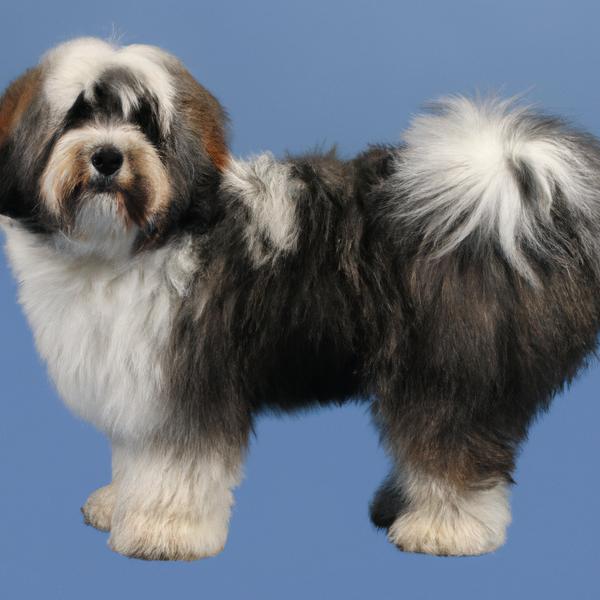
Fo-Chon
Bullmastiff vs Fo-Chon
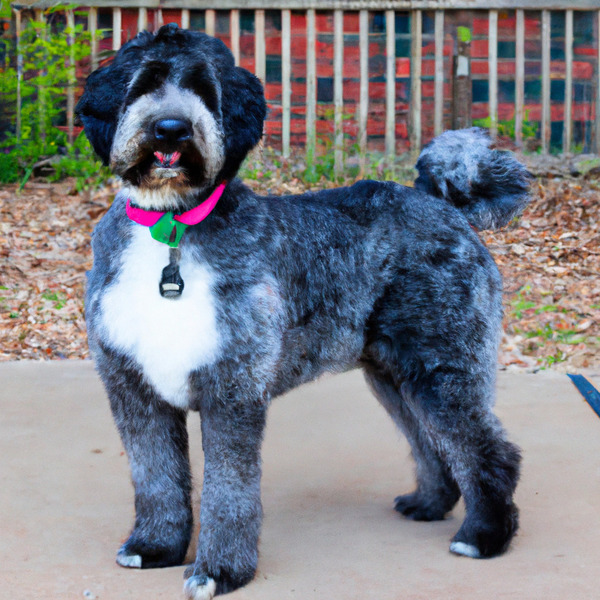
Saint Berdoodle
Bullmastiff vs Saint Berdoodle
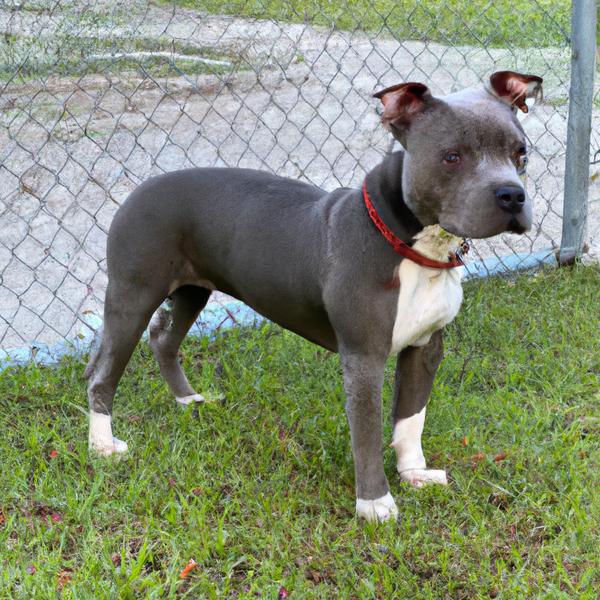
Pocket Pitbull
Bullmastiff vs Pocket Pitbull
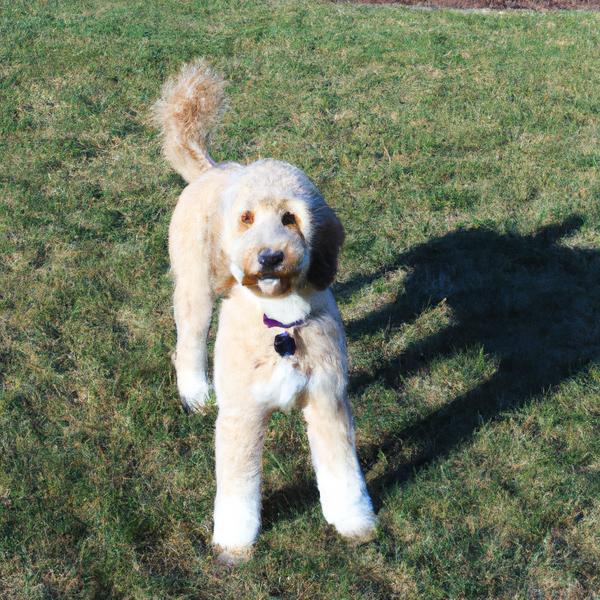
Flandoodle
Bullmastiff vs Flandoodle
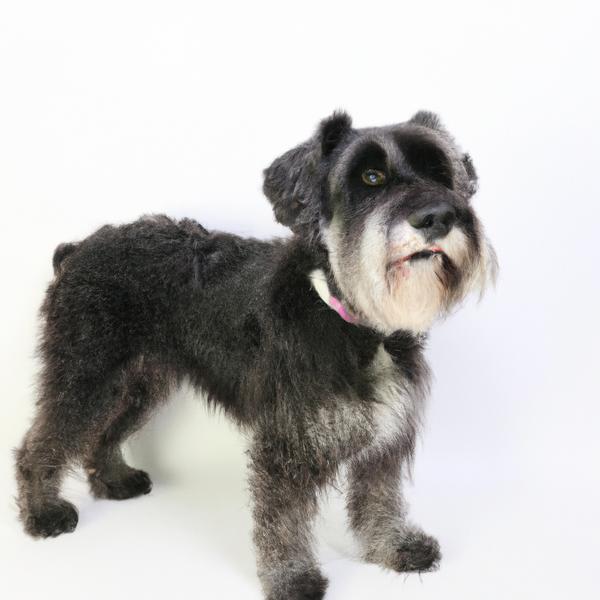
Mini Bolonauzer
Bullmastiff vs Mini Bolonauzer
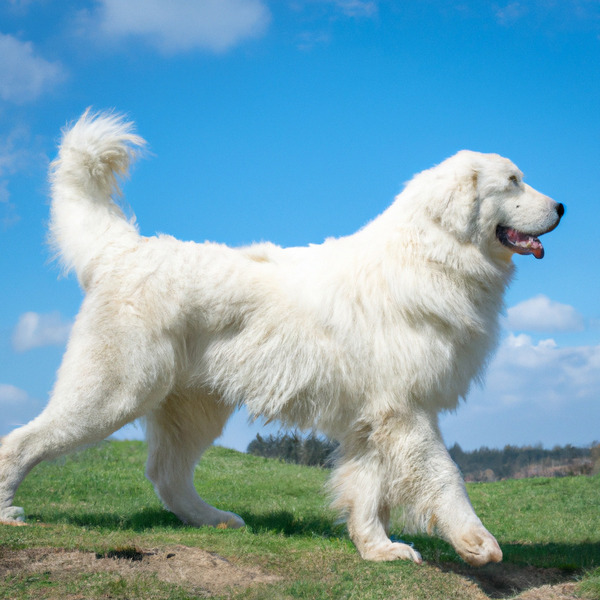
Polish Tatra Sheepdog
Bullmastiff vs Polish Tatra Sheepdog
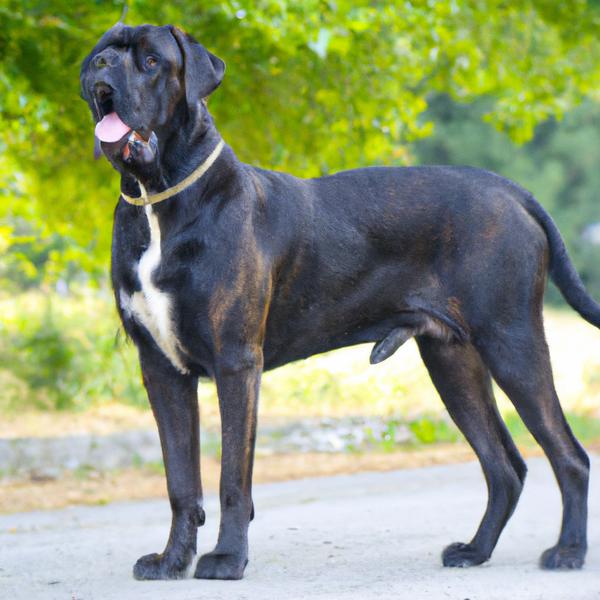
Weltador
Bullmastiff vs Weltador

Great Danoodle
Bullmastiff vs Great Danoodle

Shethund
Bullmastiff vs Shethund
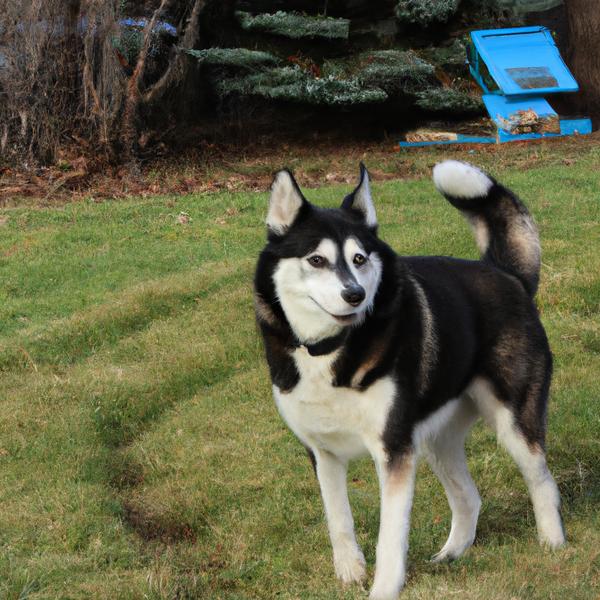
Husky Jack
Bullmastiff vs Husky Jack
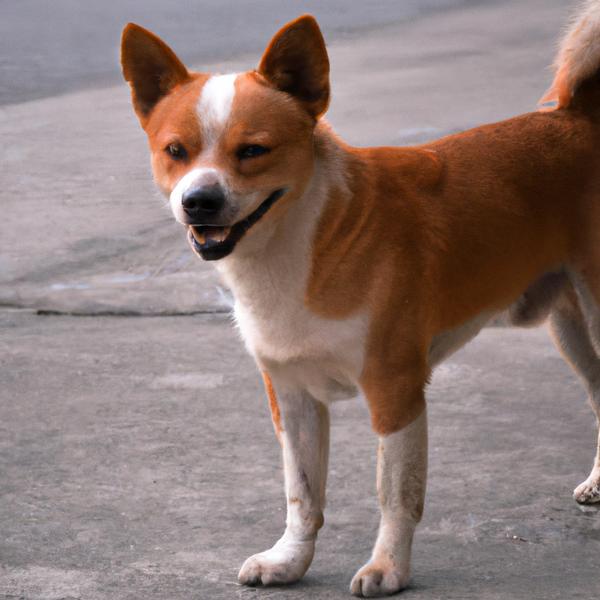
Shinese
Bullmastiff vs Shinese
